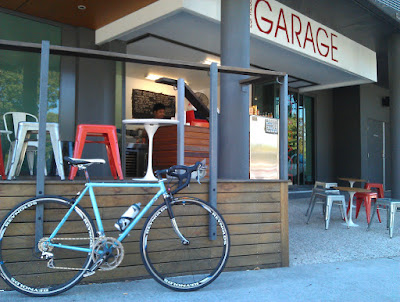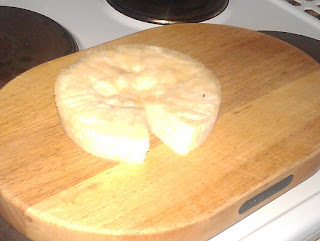Bad weather and work pressures have stopped me getting out to the woods for a trail run for the last couple of weeks, so I've resorted to pounding the pavements again. On Wednesday night I extended my regular route a little to 7.5km (including 80m of descent / ascent), which I managed in 44 minutes. More importantly I started to get back into 'the zone', with my mind quieting down, my body feeling loose and a sense of calm sometimes penetrating the plodding. God help me, I started to enjoy it.
Until I woke up the next day with a very painful knee. Normally it's my shins that ache so at first I thought I'd partly conquered the shin pain, but the day after that the aches & pains although focused in my knee also spread down to my shins and ankles. I wasn't quite hobbling, but I was definitely limping. I sought solace on-line, but my regular bunch of triathlete runner types basically told me to suck it up, everyone gets hurt so your whinging and get on with it. Which to be fair is probably good advice.
By coincidence I also got a copy of 'Born To Run' by Christoper McDougall yesterday. The author starts off with the simple question 'why do my feet hurt when I run' and then heads off to a remote area of Mexico to dodge drug smugglers & hang out with a tribe of ultra-runners. His early comments on running are worth paraphrasing...
"Take up any other sport and my injury rate would classify me as defective. In running, it makes me normal. The real mutants are the runners that don't get injured. Up to eight out of ten runners are injured every year. No invention yet has slowed the carnage. If anything it's actually ebbed up; Achilles Tendon blowouts have seen a 10 percent increase. Running seemed to be the fitness version of drunk driving; you could get away with it for a while, you might even have some fun, but catastrophe was waiting right around the next corner'.
He also visits a sports doctor who's advice is 'get a bike'. Now there's a thought.
Until I woke up the next day with a very painful knee. Normally it's my shins that ache so at first I thought I'd partly conquered the shin pain, but the day after that the aches & pains although focused in my knee also spread down to my shins and ankles. I wasn't quite hobbling, but I was definitely limping. I sought solace on-line, but my regular bunch of triathlete runner types basically told me to suck it up, everyone gets hurt so your whinging and get on with it. Which to be fair is probably good advice.
By coincidence I also got a copy of 'Born To Run' by Christoper McDougall yesterday. The author starts off with the simple question 'why do my feet hurt when I run' and then heads off to a remote area of Mexico to dodge drug smugglers & hang out with a tribe of ultra-runners. His early comments on running are worth paraphrasing...
"Take up any other sport and my injury rate would classify me as defective. In running, it makes me normal. The real mutants are the runners that don't get injured. Up to eight out of ten runners are injured every year. No invention yet has slowed the carnage. If anything it's actually ebbed up; Achilles Tendon blowouts have seen a 10 percent increase. Running seemed to be the fitness version of drunk driving; you could get away with it for a while, you might even have some fun, but catastrophe was waiting right around the next corner'.
He also visits a sports doctor who's advice is 'get a bike'. Now there's a thought.






